Beyond the Material: The Power of Human Attention
003 What if your attention shapes reality? Explore the impact of human awareness on the material world. Through consciousness and quantum theories, discover how your focus could ripple into unseen realms, transforming possibilities. The universe awaits your gaze—will it respond?
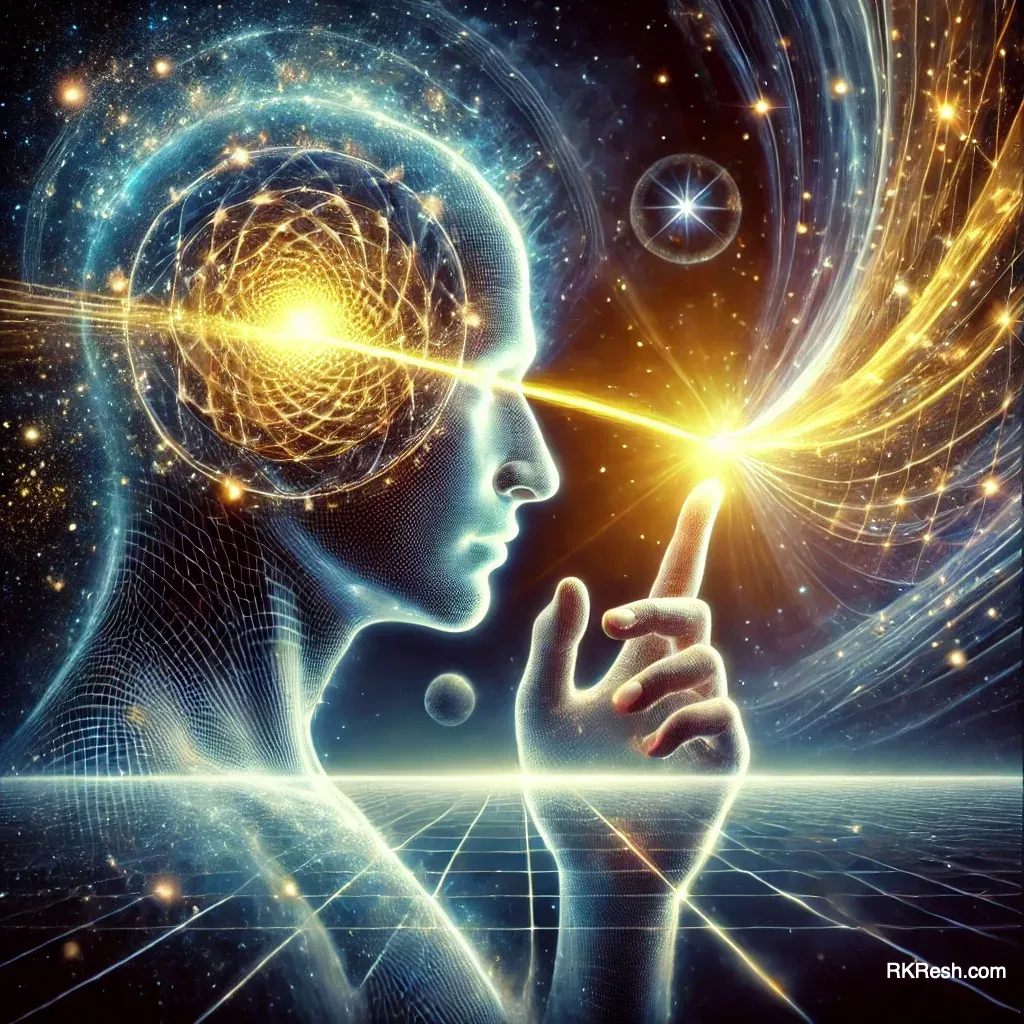
Attention Series 003
The Debate—Does Human Consciousness Affect Reality?
In the previous article, I delved into the renowned double-slit experiment and its profound implications on how observation might give rise to a definite reality from the quantum field. In this follow-up, I will expand on that exploration, examining the intricate relationship between the quantum field and observation while considering the intriguing possibility that consciousness itself plays a role in shaping the fabric of reality.
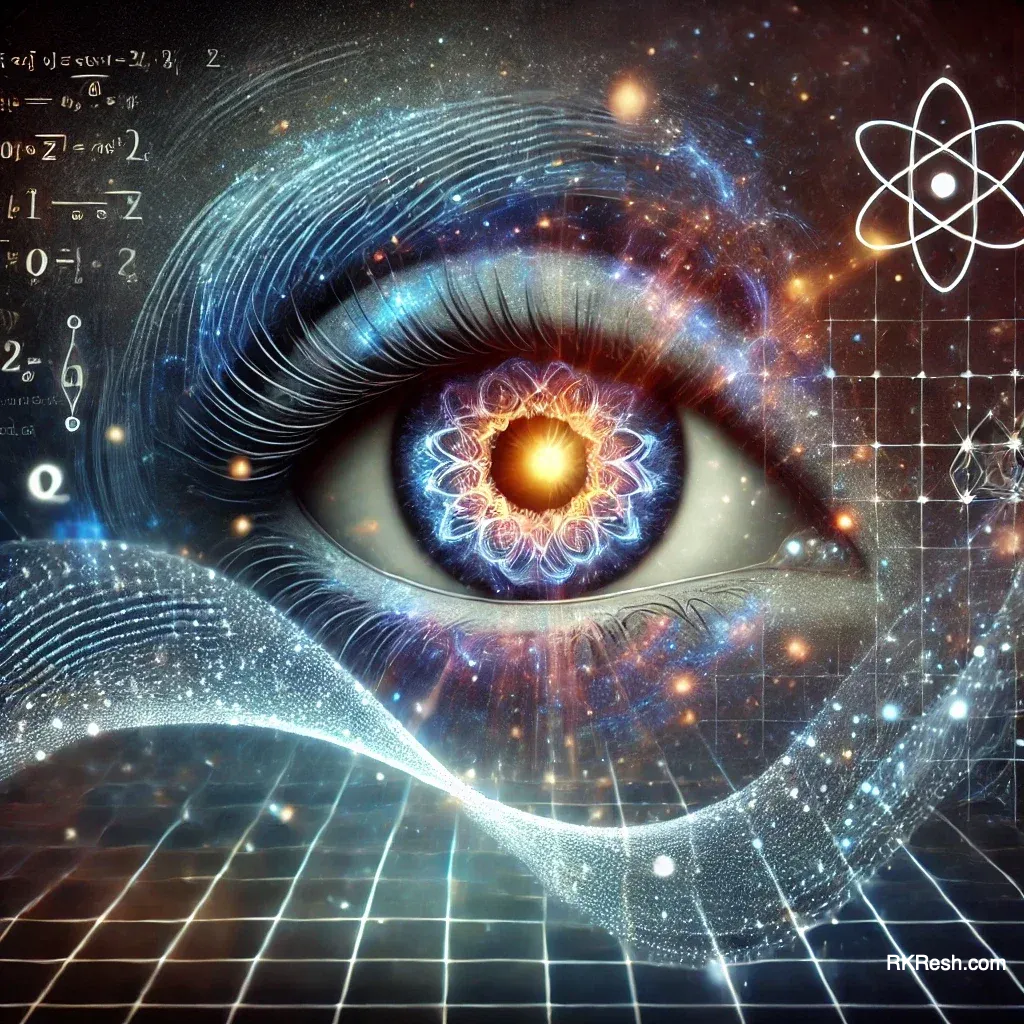
When you gaze at the cosmos, can the cosmos feel your eyes upon it? This question is not merely poetic; it lives at the crossroads of science, philosophy, and quantum theory—a place where conventional boundaries unravel and infinite possibilities begin. Here lies the debate of quantum consciousness, a concept that dares to suggest that human observation may not only witness reality but shape it.
The question of whether human consciousness wields the power to alter reality invites an examination of quantum mechanics, the enigmatic layer of our universe where particles hum with uncertainty and the act of observing seems to sculpt their existence into being. To what extent does the observer—does consciousness itself—participate in the dance of reality?
This exploration takes us to the heart of the quantum paradox, the wavefunction collapse, and a force that could reconcile the intangible with the physical world.
Understanding the Foundations of Quantum Perception
Before we ask whether consciousness collapses reality, we must understand the metaphysical scaffolding beneath this question.
The Copenhagen Interpretation
The Copenhagen Interpretation of quantum mechanics, developed by Niels Bohr, suggests that quantum particles exist in multiple, overlapping states until observed. It is the act of observation—of measurement—that forces these possibilities into a singular, definite reality. Put simply, the particle "chooses" its form when we, with our human awareness, look at it.
But who or what exactly observes? Is it a scientific instrument, a human eye, or something deeper, something more ephemeral? The Copenhagen Interpretation leaves this question tantalizingly unanswered.
The Many-Worlds Interpretation
Opposing the Copenhagen view is the equally provocative Many-Worlds Interpretation. Here, observation does not collapse possibilities into a single outcome. Instead, all possibilities occur simultaneously, each spawning its complete, parallel universe. Every moment of observation branches realities into a limitless cosmic multiverse.
This perspective removes the mystical role of the observer but raises a stunning implication—rather than shaping reality, our consciousness might merely ride its branching currents, each choice fracturing us into infinite versions across infinite dimensions.
Reconciling Copenhagen and Many-Worlds: Two Sides of the Same Coin
In my view, it’s entirely possible that both the Copenhagen interpretation and the Many-Worlds interpretation of quantum mechanics are simultaneously valid—two perspectives on the same fundamental experience. The Copenhagen interpretation focuses on collapsing multiple possibilities into a single outcome, while the Many-Worlds interpretation envisions one reality branching into countless others.
At first glance, these ideas may appear contradictory. However, if we entertain the notion that reality operates within a non-linear framework—where its "solidification" unfolds in a multidimensional manner rather than along a simple linear timeline—a more coherent perspective begins to take shape. Consider this: if reality's solidification arises from its smallest building blocks (the transition from wave to particle) and exists only in the act of observation, could it then dissolve back into these fundamental components in the absence of observation? This concept opens the door to countless intriguing thought experiments, which I look forward to exploring further in future discussions.
In such a system, there could be an underlying “anchor” that determines which reality becomes valid for each observer. Without observation, we cannot know what exists; yet after observation, reality can theoretically branch into infinite possibilities. This raises a crucial question: who or what decides which version of reality is created (are realities even created, or are they simply selected?) anchored in our dimensional experience at a given moment in time? While the question of "Who is the Observer?" is an age-old philosophical puzzle, my interest lies in proposing that both the Copenhagen and Many-Worlds interpretations might represent distinct yet complementary perspectives on the same overarching system.
In my synesthetic way of thinking, I perceive this "anchor" as attention itself. When I reflect on this concept, I envision a sphere representing the system that shapes reality. Within this sphere lies a "soup" of infinite possibilities, through which a focused energy—attention, or observation—moves, solidifying potential realities and dividing them through what we might call decision-making. Admittedly, this metaphor may not be particularly strong, but I’m struggling to find a more relatable way to articulate it at the moment.
The Observer's Great Dilemma
The paradox crystallizes here. If consciousness does, as the Copenhagen Interpretation suggests, collapse the wavefunction into a singular reality, then human attention wields extraordinary creative power. But if consciousness instead coexists as one thread in the vast fabric of the multiverse, its role seems passive—an uninvolved witness.
Which is true? Or could both be simultaneously valid? I say that both can be valid. It's paradoxical, and yet it might work.
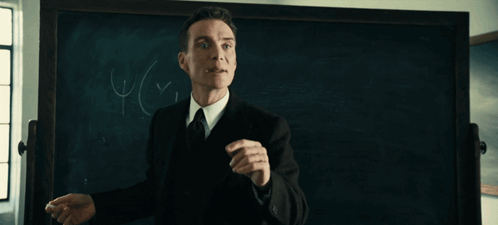
Experimentation on Conscious Interaction
The story begins with Thomas Young's double-slit experiment—a profound moment in scientific history. Shine light through two slits, and its particles behave like waves, creating overlapping patterns. But observe the experiment closely, and these patterns vanish, transforming into discrete particles.
The mere presence of an observer—in this case, a recording device—appeared to alter the outcome. But was it truly the act of observation, or was it something else, something less personal? Could human attention, holding the vast potential of consciousness, exert an even greater influence than mechanical observation?
The Ripple of Human Consciousness
Enter the Princeton Engineering Anomalies Research (PEAR) project, one of the few modern efforts to explore the influence of consciousness on matter. Over nearly three decades, researchers at PEAR conducted experiments on random event generators, seeking evidence that human thought could subtly influence material outcomes.
The results? While controversial, some patterns emerged—whispers in the data, if you will—that hinted at non-random connections between human awareness and physical machines. These findings, debated and dissected, open a door that leads as easily into mystery as it does into discovery.
Could Attention, in this context, be more than passive awareness? Could it act as a metaphysical force, reaching into the quantum realm to guide particles, energy, and events?
The Theory of Attention as a Bridge
Perhaps Attention is the missing link—the thread connecting the observer to the observed. Unlike observation in its passive form, Attention implies intentional focus and presence. It suggests that human beings might function not only as spectators in the cosmic theater but as co-authors.
What if, when practicing deep Attention, we align with this vibrational reality, subtly shaping outcomes with our focused will? Within the constraints of scientific inquiry, such notions skitter dangerously close to the philosophical—but nothing in this realm is truly safe from reexamination.
The Cosmic Mirror—An Expansive View
Whether we align with Copenhagen, cling to the Many-Worlds theory, or stand on the precipice of Attention-as-anchor, common element emerges. Consciousness, and the questions it provokes, is inseparable from our understanding of material existence. Is it possible that all these explanations are true, each representing a fragment of a greater whole that we cannot fully comprehend, but can only begin to understand by examining its individual parts? I tend to veer towards this possibility of harmonizing these fragments to gain the full picture.
To ponder the quantum is to gaze into a mirror—and see reflected not only the image of the universe but also the delicate shape of oneself. It begs us to ask, "What am I in relation to this vast material sea? Do I ripple its surface, or does its current sweep me along unnoticed? Or, is it both?" Are we able to select the grander energy currents with our attention, surfing possible timelines both individually and collectively? And together with those grander currents, are we able to co-create our realities in tandem with Nature and Cosmos?
Questions remain wider than any answer offered. Yet this breadth does not fuel hopelessness—it fuels wonder, an open-ended yearning to seek the unseen truths quivering beneath our comprehension.
Imagining the Future
Imagine bridging the gap between current experiments and the next frontier of quantum consciousness research. What if we could measure the tangible influence of Attention in controlled settings? What if we could rewrite the laws of physics to reflect not merely observation but active co-creation?
The more we seek, the more we expand what is knowable. And in the spaces made visible by this expansion, we glimpse potential not only for science but for society and self.
A Question for Thoughtful Minds
If human Awareness holds even a fragment of power in shaping the material world, what moral and practical obligations might we carry? To wield such a subtle yet impactful force would be both a privilege and a responsibility.
How, then, could this understanding ripple through your own life—your choices, your focus, and the energy you bring into this shared world?
To take the next step in unraveling these mysteries, join discussions in consciousness studies and quantum theories. Begin by questioning how the smallest flicker of human Attention might alter not just what is seen but the unseen environments that cradle possibility.
Dive deeper. The universe awaits your gaze—and perhaps, it waits to respond.


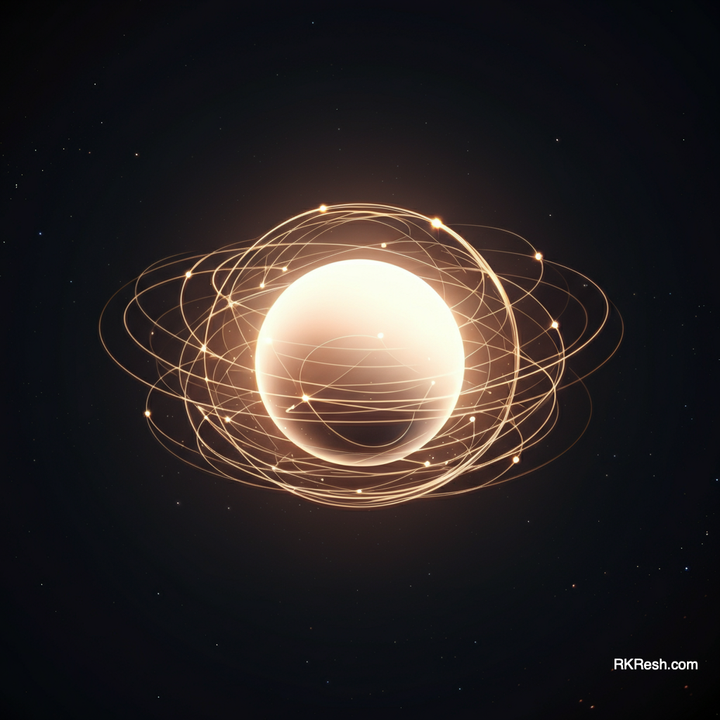

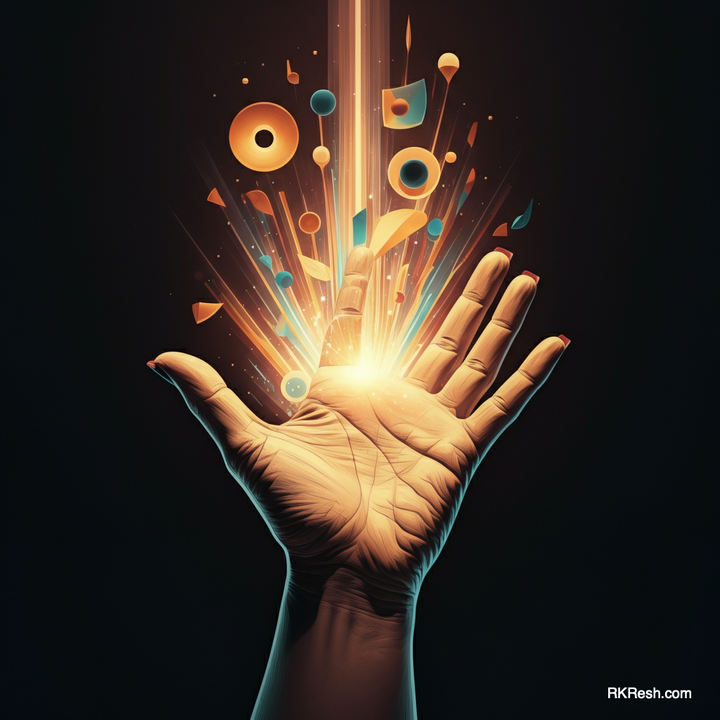
Comments ()